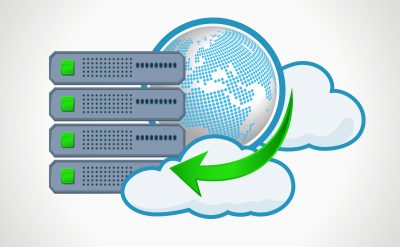Many enterprises still believe that cloud and virtualization are the same technology powering their operation but it’s not. Cloud and Virtualization are two completely different concepts and virtualization is a part of cloud computing. A cloud computing is defined as technology that implements on-demand network access to share a pool of resources that can be rapidly used with minimum effort or interaction. The essential part of any cloud computing is on-demand self-service, broad network access, resource pooling, flexibility, and measurable services.
Virtualization is the technology that powers the cloud computing, it separates the computing platform from the physical infrastructure. Enterprises that use virtualization can run multiple operating systems and applications on the same system without actually installing them. Virtualization offers the flexibility of utilizing the resources to the optimum level with access to the different underlying platform.
Virtualization is the technology that develops virtual machines and cloud computing offers the developed virtual machine as a service. Cloud computing alone cannot stand without the virtualization of resources- software and hardware. The interchangeability of the terms cloud and virtualizations has resulted in the confusion of the terms as both works together to provide different services. The innovation of cloud technology has resulted into development of containerization and micro-services replacing the virtualization.
Below we would be looking towards how the telecommunication industry can shift towards computing containerization to better utilize their resources. To know more about the recent development in the virtualization in cloud computing and different implementation you can visit our whitepapers.
Virtualization decoupled the telecom applications from the specified application purpose equipment. During the transformation from function specific or application specific equipment to a virtual machine that performs the range of operations. Virtualization was a very important step in the scaling of the network function for telecom industry that depends on the physical equipment’s.
Cloudification was a big transformation; it enabled new business services such as platform-as-a-service (PaaS) or network-as-a-service (NaaS). It’s Introducing a complementary set of tools for better scalability, resilience, and management for various network functions and services. OpenStack has become a prime choice for the communication service providers and vendors.
Introducing the cloud-native it’s one of the initial implementation wherein “cloud-first” was used. From the application and services designed to support the cloud infrastructure with the usage of the micro-services feature. Based on the micro-services architecture and functional virtual machine wherein the containers replaced the bare metal machines provided the enterprises with maximum flexibility. The native cloud provided the required openness that can be used with open source or inner source and ease of inducting API’s for creating new services.
The potential benefits of cloud-native infrastructure helped in the creation of infrastructure that is scalable and flexible.
HERE ARE CLOUD-NATIVE BENEFITS FOR TELECOMMUNICATION INDUSTRY:
1. Stipulating the resources according to the requirements as the traffic increases for a given service.
2. Delivering the customer expectation through guaranteed quality for the different service.
3. Lowering the cost of ownership as each service can be scalable through automation and off-the-shelf equipment.
4. In the Cloud native enterprises, you can also implement “pay-as-you-grow”. Reducing the up-front risks and cost of new services.
The cloud-native environment can support the primary objective wherein the customer can get a better experience, coping with different functionalities across the network, reduce the operation cost, and implement the complex networks and creating the innovation for the telecoms. Cloud won’t be an end journey but it would be a slow transformation process that can help in creating the required infrastructure model that can be transformed. For 5G a complete transformation is needed for the current infrastructure that’s been used and cloud can be a solution for the telecom providers.
To know more about Virtualization and it’s enterprise implementation, you can download our whitepapers.














